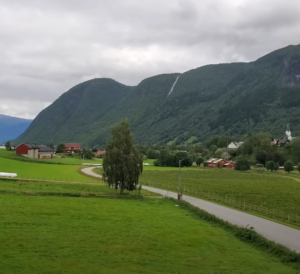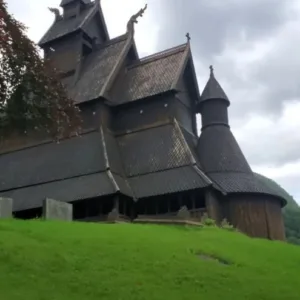Tucked away amidst the tranquil Norwegian mountains, the Hopperstad Stave Church, a venerable structure dating back 900 years, beckons intrepid adventurers to journey through the annals of time.
This medieval wooden Christian church is a captivating piece of history, boasting a design deeply entwined with pragmatism and tradition. Its steadfast stone foundations and walls coated in protective tar have endured centuries, silently witnessing the rise and fall of civilizations.

Venturing inside, you’re enveloped by the subtle fragrance of ancient timber and greeted by a surprisingly vibrant slice of history. The ceiling, ingeniously resembling an inverted ship, pays homage to the maritime expertise of Viking builders, who constructed a resilient and enduring roof.

Underfoot, the original floor tells stories of countless footsteps from bygone eras—each one a traveler from the past, bearing their beliefs, dreams, and tales. Interestingly, the church doubled as a unique final resting place, particularly for children, who were interred beneath the floor until the 19th century when the practice ceased due to the associated odor.
The walls are adorned with murals from the 1300s, vividly recounting biblical narratives. Shields representing affluent families silently convey stories of alliances, societal structures, and the fusion of cultures and nations in a bygone age.

An intriguing feature is a small window, shrouded in theories and legends about inclusivity and societal norms of that time. It’s believed that this window was designed for individuals afflicted by leprosy, permitting them to partake in the spiritual life of the community while maintaining physical separation due to their ailment.

Within the church’s hallowed walls, three languages coexist in inscriptions, celebrating linguistic diversity. Before formal education, the church played a pivotal role in language acquisition, with priests possibly delivering sermons in multiple languages, fostering a multilingual community.

Today, the Hopperstad Stave Church is one of only 28 such structures still standing. It not only stands as a historical monument but also serves as a contemporary venue, hosting weddings, concerts, and ongoing religious and social events.
It’s a bridge connecting eras, where the ancient and the modern harmoniously coexist. Here, you can traverse through time, immersing yourself in the past while firmly rooted in the present.





